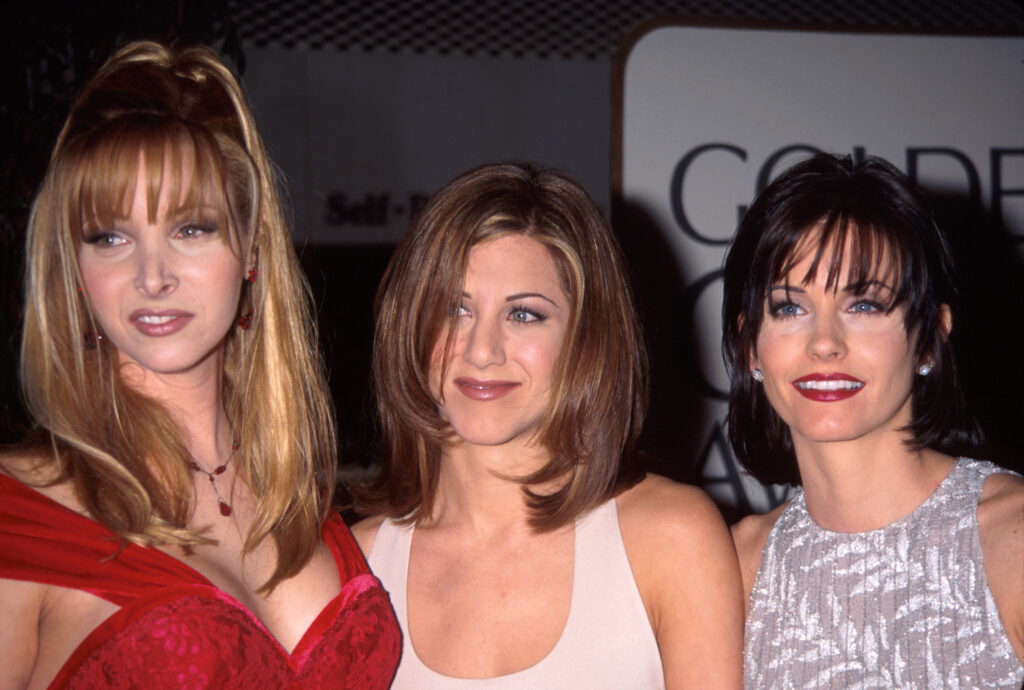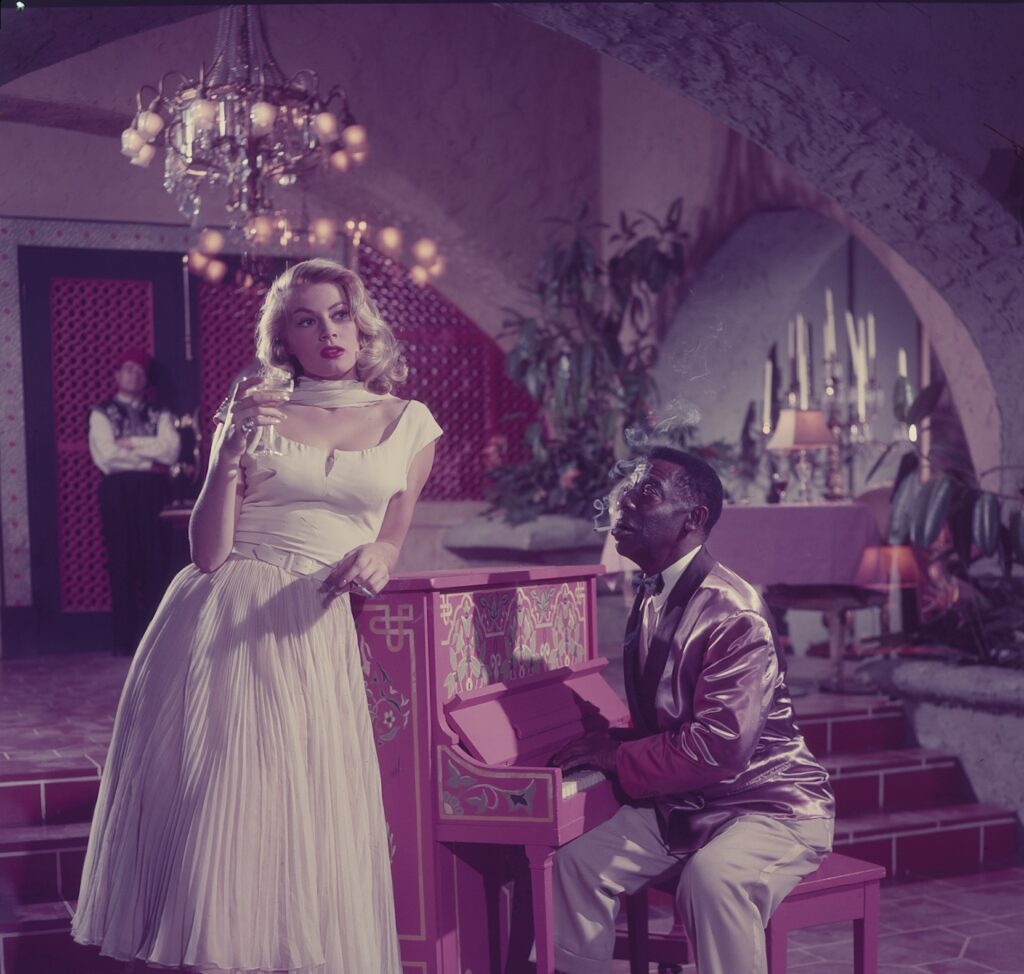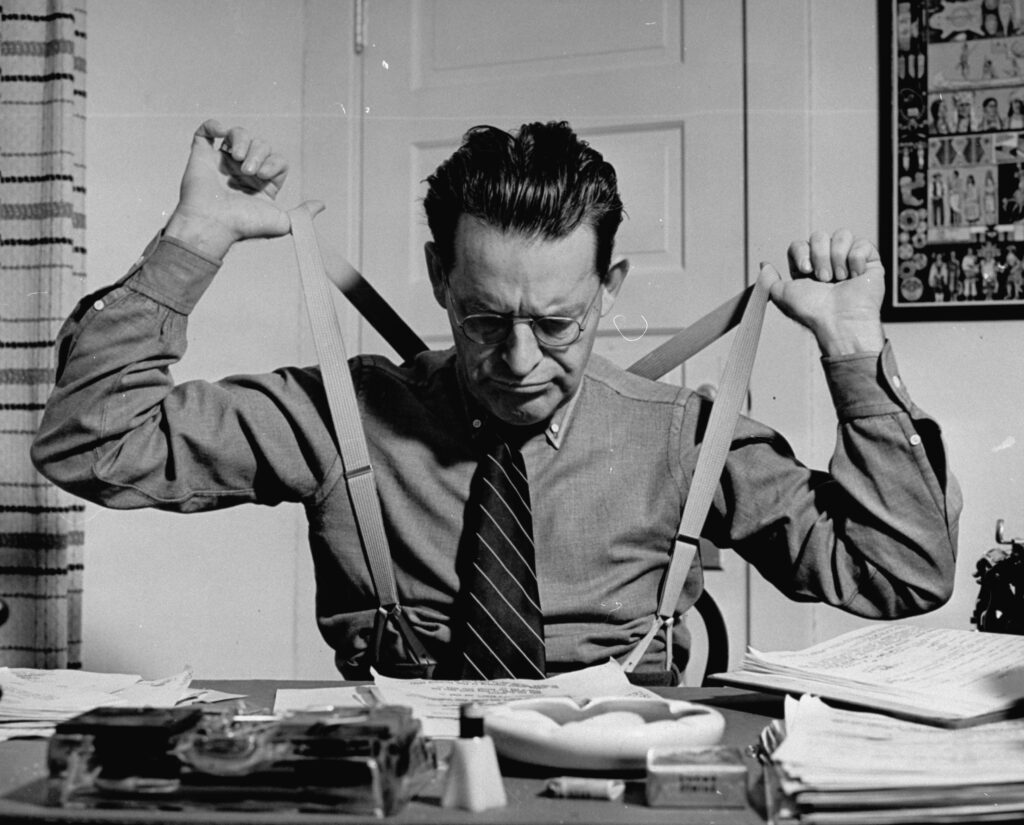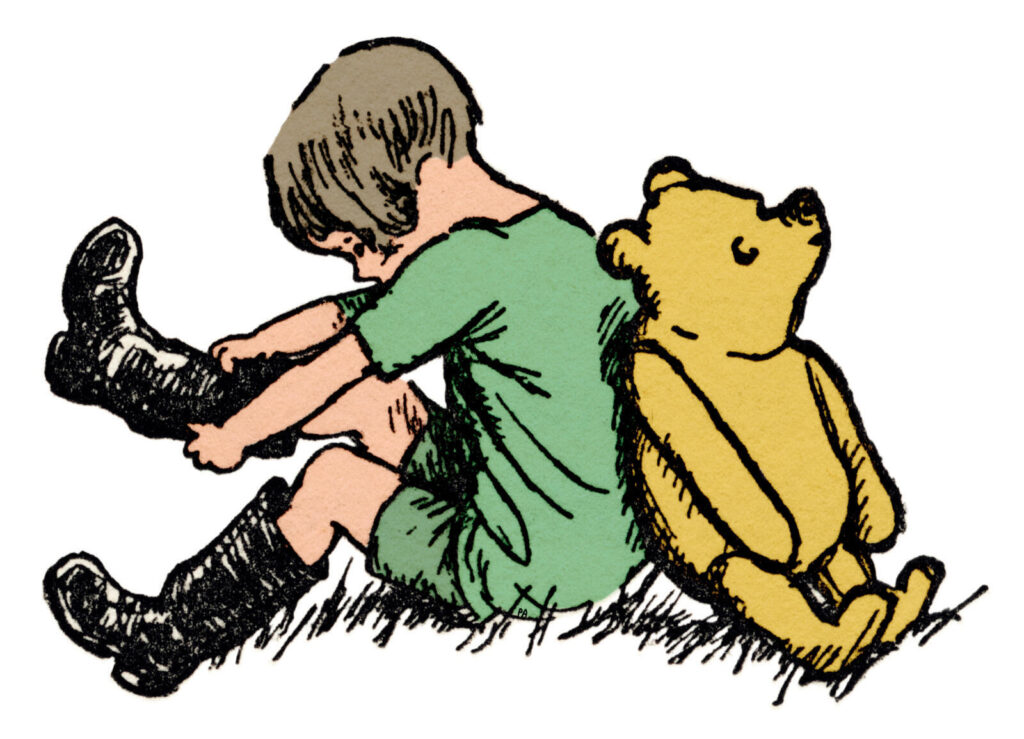Who doesn’t want to finish the summer in style? If that was the goal of these Santa Monica lifeguards and their friends, then mission accomplished. The party captured by LIFE photographer Peter Stackpole certainly looks like grand old time, especially because these lifeguards pulled their lunch straight from the ocean.
The story that ran in the Nov. 18, 1940 issue was titled “LIFE Goes to a Lifeguard Party.” The lifeguards and their friends sailed a short ways north to Point Dume for the day, but the story drew on the glamor of their Santa Monica origins, talking about how these young men were responsible for protecting Cary Grant, Norma Shearer, Marion Davies and other movie stars who had beach homes in their territory. The lifeguards were at least connected enough to borrow a boat for their party from actor Arthur Lake, best known for playing Dagwood in the Blondie movies based on the popular comic strip. LIFE’s story described the female party guests as “Aquabelles from the San Francisco Fair,” which seems to reference to a show called Aquacade that had been popular around the country and had set up shop in San Francisco that summer.
A highlight of this lifeguard party was when they took Lake’s boat out, dropped anchor, and began to forage in the Pacific. Here’s how LIFE described the scene:
Diving for abalone, lobster and octopus in beds of entangling kelp is a hazardous sport, hence the Aquabelles stayed on the paddling boards, spotted game by peering into the depths through gas masks (used professionally by the guards when searching for drowning victims) and let their expert hosts do the underwater work….Boys dived for abalone and for spiny lobsters which they captured by grabbing their feelers, yanking them out of their holes. Soon they had enough for lunch.
After securing their catches, the lifeguards went to the shore to boil the seafood and then returned to their sloop to dine.
After eating, they took their boat home to Santa Monica and despite the fine day there was a wistful feeling about summer coming to an end. LIFE’s story closed on this note: “As they sailed home through the slashing sunlight, they realized with quick regret that the day had been brief, the hot golden summer finally fled. Soon winter’s fogs would billow over empty beaches from the sea.”

Santa Monica lifeguards partied at the end of their season, California, 1940.
Peter Stackpole/Life Picture Collection/Shutterstock

Scene from a season-ending party for Santa Monica lifeguards, 1940.
Peter Stackpole/Life Picture Collection/Shutterstock

Paddlers gathered over a bed of kelp where they hoped to find lobsters and abalone for the Santa Monica lifeguards’ season-ending party, 1940..
Peter Stackpole/Life Picture Collection/Shutterstock

A member of a lifeguard’s party dove for abalone that would be part of their end-of-summer seafood feast, California, 1940.
Peter Stackpole/Life Picture Collection/Shutterstock

The octopus was among the catches of the day for the season-ending party for Santa Monica lifeguards, 1940.
Peter Stackpole/Life Picture Collection/Shutterstock

A member of the lifeguard party killed a recently-caught octopus by biting its head, Santa Monica, California, 1940.
Peter Stackpole/Life Picture Collection/Shutterstock

Part of the freshly caught lunch at a season-ending party for Santa Monica lifeguards, 1940.
Peter Stackpole/Life Picture Collection/Shutterstock

The seafood that had been pulled from the water was cooked on land and then taken back aboard their boat during the Santa Monica lifeguards’ season-closing party, 1940.
Peter Stackpole/Life Picture Collection/Shutterstock

Santa Monica lifeguards relaxed after an on-boat lunch of freshly caught seafood during their season-ending party, 1940.
Peter Stackpole/Life Picture Collection/Shutterstock

Santa Monica lifeguards and their guests relaxed after lunch aboard a boat at their season-ending party, 1940.
Peter Stackpole/Life Picture Collection/Shutterstock

The Santa Monica lifeguards sailed home from Point Dume at the close of their season-ending party, 1940.
Peter Stackpole/Life Picture Collection/Shutterstock




















































































